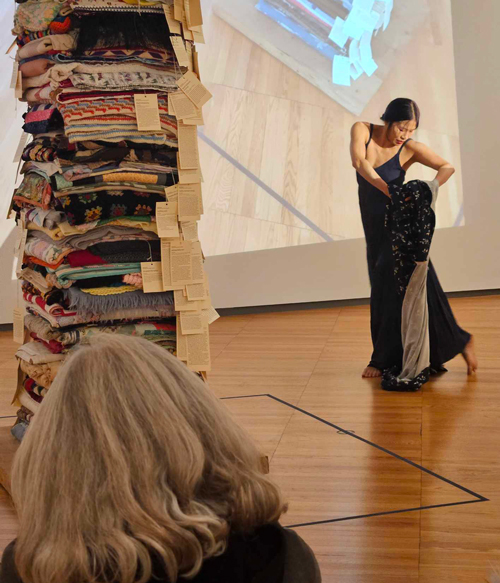July 2024
We are proud to present Krannert Art Museum’s new strategic plan, our first plan shared publicly since 2013. Developed collectively by the entire team, and drawing on the wisdom of diverse community voices, our goals over the next three years focus on the needs of the here and now while prioritizing a sustainable future. Equity, care, a just use of resources, community relevance, and a deep sense of welcome and hospitality live at the plan’s core.
—Jon L. Seydl, Director (2018–2025)
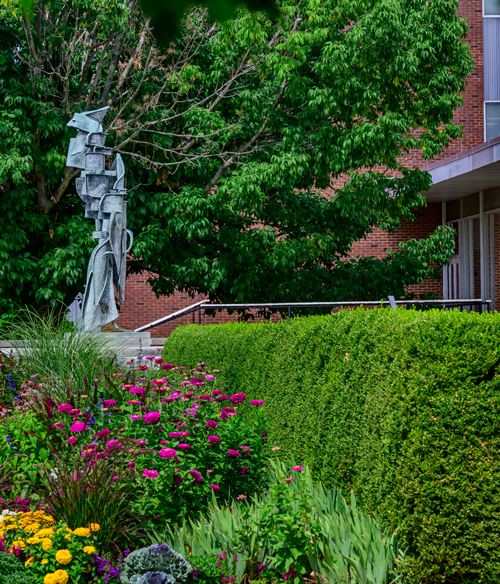
Vision
We envision a world where art and creativity transform peoples’ lives and inspire us to become more engaged members of our communities.
Mission
Krannert Art Museum fosters engagement with the visual arts by creating meaningful connections for our diverse communities, histories, and worlds.
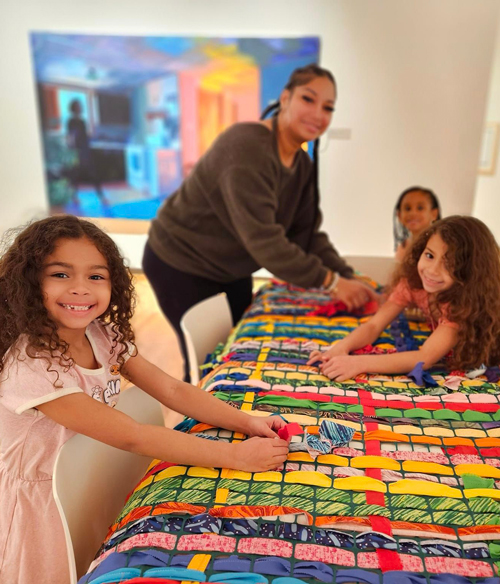
Core Values
Position Museum as Laboratory
Krannert Art Museum promotes knowledge and experimentation, invites critique, reckons with our past, strives for excellence in interpreting our collections, and sparks curiosity and wonder in our audiences.
Promote Sustainability
Krannert Art Museum carefully stewards our resources and the environment through sustainable and ethical practices in our operations.
Center Care and Accessibility
Krannert Art Museum values accessibility for all by prioritizing universal design, nurturing belonging and connectedness, and embracing multiple learning styles and types of knowledge. The museum holds space for change-makers, uplifts historically underrepresented artists and communities, and remains open, cooperative, and responsive.
Guiding Principles
We are responsible to the communities of east central Illinois and University of Illinois students, faculty, and staff, while connecting with audiences nationwide and across the globe.
We believe that as part of a land-grant institution, Krannert Art Museum bears responsibility to confront histories of Indigenous displacement and provide support to this land and its communities.
We are a space for joy, sanctuary, dialogue, learning, contemplation, and social engagement.
We are committed to the ongoing work of greater accessibility, diversity, and inclusion.
We recognize that listening, collaboration, and a commitment to equity transform the here and now.
We embrace the exchange of ideas, diverse learning styles, ways of knowing, languages, lived experiences, and imagined futures.
We believe that care and compassion for our communities and our team is fundamental to the work of the museum.
We understand that storytelling and relationship building are necessary to the formation of an art-centered community.
Strategic Priorities and Objectives
Art and Inquiry
Krannert Art Museum is committed to research and the production and sharing of knowledge in the visual arts through engagement with and for our communities.
Build an inclusive collection reflective of diverse and underrepresented artists, stories, histories, and experiences.
- Tactic 1: Increase percentage of work in the collection by BIPOC artists and women makers by 5% annually by fall 2027.
- Tactic 2: Assess and reorganize museum records prior to 2013 to improve efficiency of collections research.
- Tactic 3: Develop initiatives to support provenance research, restitution, and repair.
Use our collections and exhibitions as a portal for critical inquiry, self-awareness, and social justice through teaching, research, and public engagement.
- Tactic 1: Develop sustainable and consistent collaboration opportunities with campus faculty using collections and exhibitions.
- Tactic 2: Promote innovative research in the arts and critical museum studies.
- Tactic 3: Create educational materials, tours, and programs for multilingual, neurodiverse, and disability-inclusive audiences for all ages.
Collaborate with university and community partners in our region.
- Tactic 1: Develop longer-term connections, more frequent, and more consistent opportunities with students.
- Tactic 2: Establish and promote clear pathways for partnership development and cosponsorships.
- Tactic 3: Develop long-term K-12 school initiatives offering in-school teaching and exhibitions at Krannert Art Museum for Title I schools that fall at or beneath the federal poverty line or initiatives prioritizing low-income, BIPOC, and disadvantaged populations.
Provide a safe and secure place for collections and visitors, home for a diversity of thought, and space to connect with present-day challenges.
- Tactic 1: Develop efficiency and safety measures for the installation team.
- Tactic 2: Develop a training schedule for all staff, working with other campus departments to ensure all employees know their roles in different emergencies.
- Tactic 3: Coauthor public welcome statements that communicate the museum’s commitment to audience care, reflective of our mission and vision.
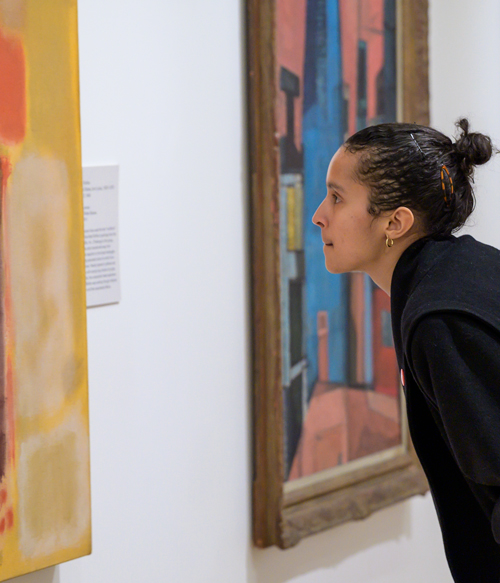
Engagement and Belonging
Engagement and relationship building commits Krannert Art Museum to deeper and more equitable ties with our communities—from social engagement to fostering belonging. We are committed to connect meaningfully to and reciprocate with our communities. Through these activities we ensure that the museum is accessible, responsive, and reflective of our place and world.
Develop and sustain long-term relationships with our diverse communities and engage in work responsive to their needs.
- Tactic 1: Develop an advisory group of campus and community members with disabilities and disability allies to provide guidance on the museum’s accessibility goals, strategies, and progress.
- Tactic 2: Develop an advisory group of K-12 teachers and other educators to support strong school and teacher relationships, including professional development.
- Tactic 3: Deploy feedback mechanisms and evaluation tools to gather and assess visitor experiences, inclusive of diversity, equity, inclusion, and accessibility, to help inform the work of other teams.
- Tactic 4: In response to expectations laid out in strategic planning surveys and community focus groups, convene listening sessions with campus and community leaders and cultural houses to inform and advance KAM’s commitment to Black and Asian communities, including accountability structures.
Become a more socially just organization through a deepened commitment to equity, diversity, and antiracism.
- Tactic 1: Develop standards of practice for the museum’s internal working groups.
- Tactic 2: Develop charge and objectives for the Diversity, Equity, Inclusion, and Accessibility committee, including a process to establish goals for each team.
Prioritize physical and cultural accessibility.
- Tactic 1: Review and update Krannert Art Museum Accessibility Guidebook to set proactive standards, goals, and recommendations that make the museum a site where information, programs, and environments are approachable, usable, and meaningful to as many people as possible.
- Tactic 2: Implement standardized accessibility measures for public galleries.
Prioritize welcoming visitor experiences for all audiences.
- Tactic 1: Review and update website tools for accessibility.
- Tactic 2: Improve overall visitor experience of the website, including the online collection.
- Tactic 3: Improve wayfinding and entrance experience for visitors.
- Tactic 4: Create a plan to design a new Education Center featuring drop-in activities, scheduled programs, and flexible activation in a defined space in the museum.
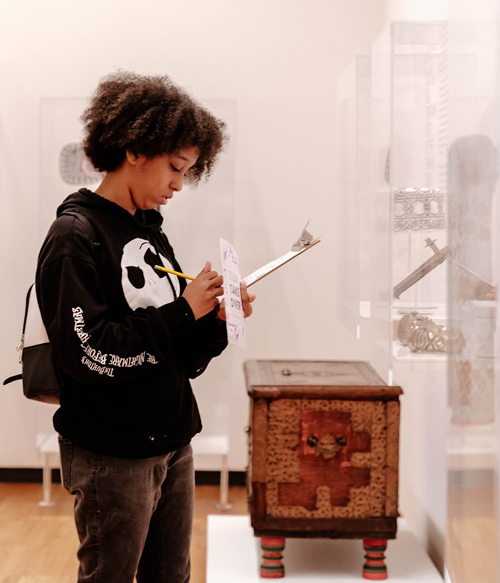
Sustainability
Krannert Art Museum is committed to environmental, operational, and financial sustainability. Our dedication to environmental and organizational health depends on careful development and stewardship of resources, budgets, and the museum facility. The museum prioritizes long-term stability for our team, our finances, our building, and our planet.
Diversify revenue sources.
- Tactic 1: Develop a strategic approach to grants, increasing external grant support by 25% in dollars awarded by summer 2027.
- Tactic 2: Reconceive annual giving, targeting annual growth of number of members by 10% and overall giving by 15%.
- Tactic 3: Grow existing and establish new endowments for education, exhibitions, and unrestricted support by $1M.
- Component 1: Steward existing endowments while cultivating future outright and estate gifts, raising $300K in new support.
- Component 2: Increase current Krannert Art Museum Endowment by $200K.
- Component 3: Add five named endowments for $500K total.
- Tactic 4: Develop a rubric for ethical funding.
Prioritize sustainable environmental practices.
- Tactic 1: Create a sustainability guide for the museum outlining policy and procedures for green practices, including resourcing and use of green products.
- Tactic 2: Collaborate with volunteer gardeners on long-term plan for the gardens’ financial and environmental sustainability.
- Tactic 3: Mitigate bird strikes on the Kinkead entrance.
Create a long-range facility plan.
- Tactic 1: Conduct a space assessment and redistribute spaces for back of house and community engagement and learning functions in light of strategic priorities.
- Tactic 2: Conduct full inventory and standardize process for converting undocumented objects to found-in-collection so that curators can determine next steps for acquisition or disposal, leading to additional storage space.
Achieve reaccreditation to maintain Krannert Art Museum’s position as a top-tier unit within the university and maintain our excellence nationally.
- Tactic 1: Establish team and assign responsibilities.
- Tactic 2: Update collections management plan, code of ethics, and emergency plan; complete conservation and educational plans.
- Tactic 3: Draft self-study.
- Tactic 4: Finish integrated collection plan with acquisition guidelines.
- Tactic 5: Submit reaccreditation – July 2025.
- Tactic 6: Place policies on website.
Steward and grow excellent relationships with university administration.
- Tactic 1: Create better and more consistent communication with university administration.
- Tactic 2: Develop projects together with the Chancellor’s Arts Integration initiative.
Nurture a work environment where employees experience support and connectedness.
- Tactic 1: Plan and implement a KAM-IDEAS (Inclusivity, Diversity, Equity, Accessibility, and Sustainability) training series.
- Tactic 2: Develop processes for nurturing healthy working relationships among staff, including conflict resolution.
- Tactic 3: Evaluate and implement gallery attendant training modules.
